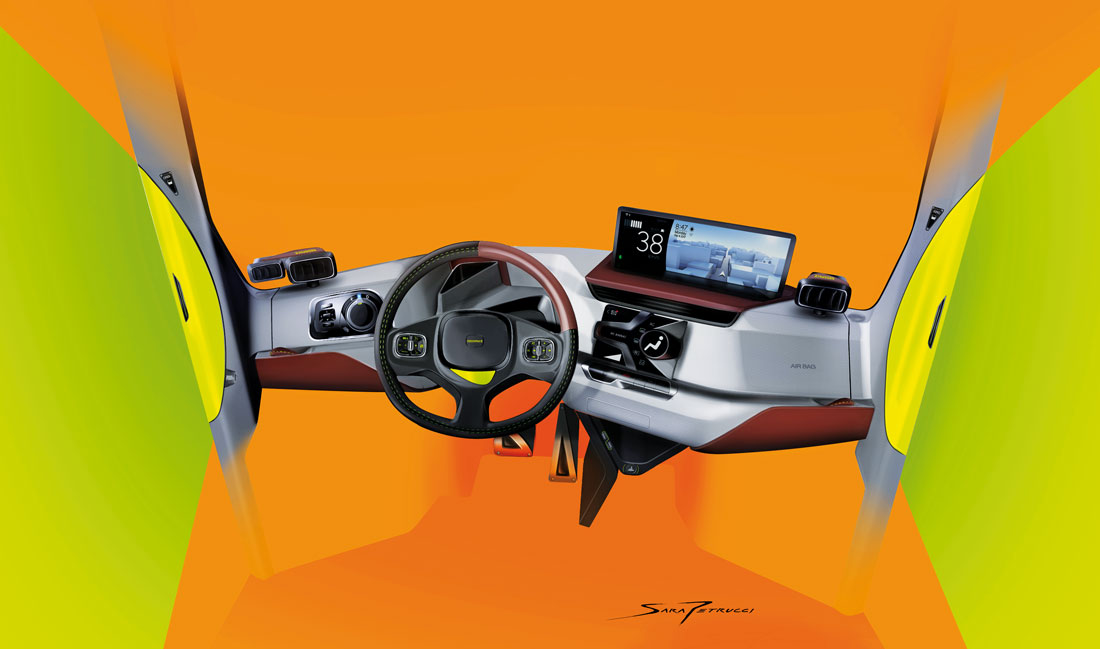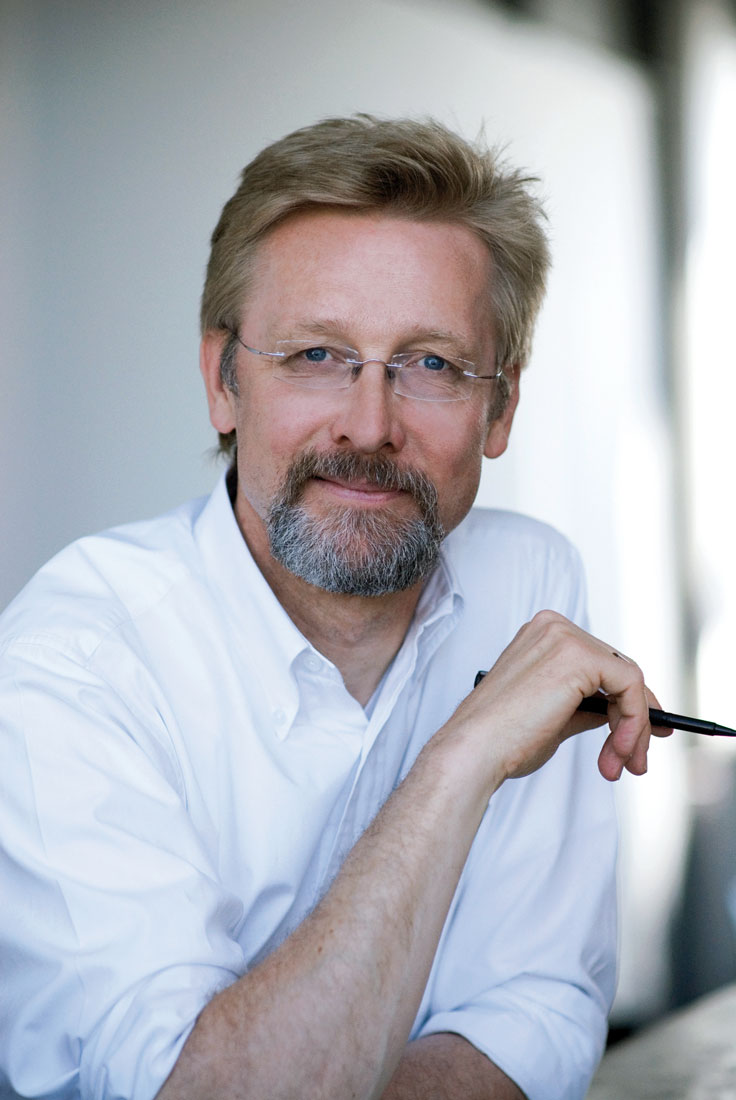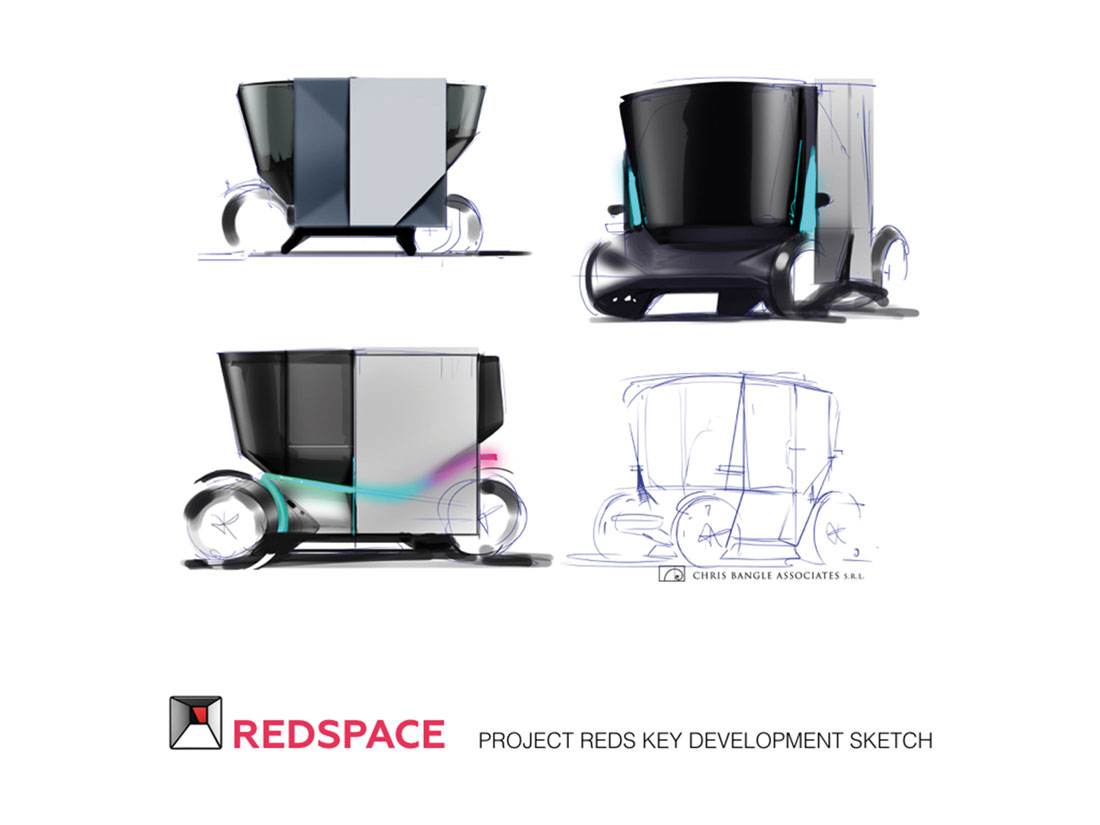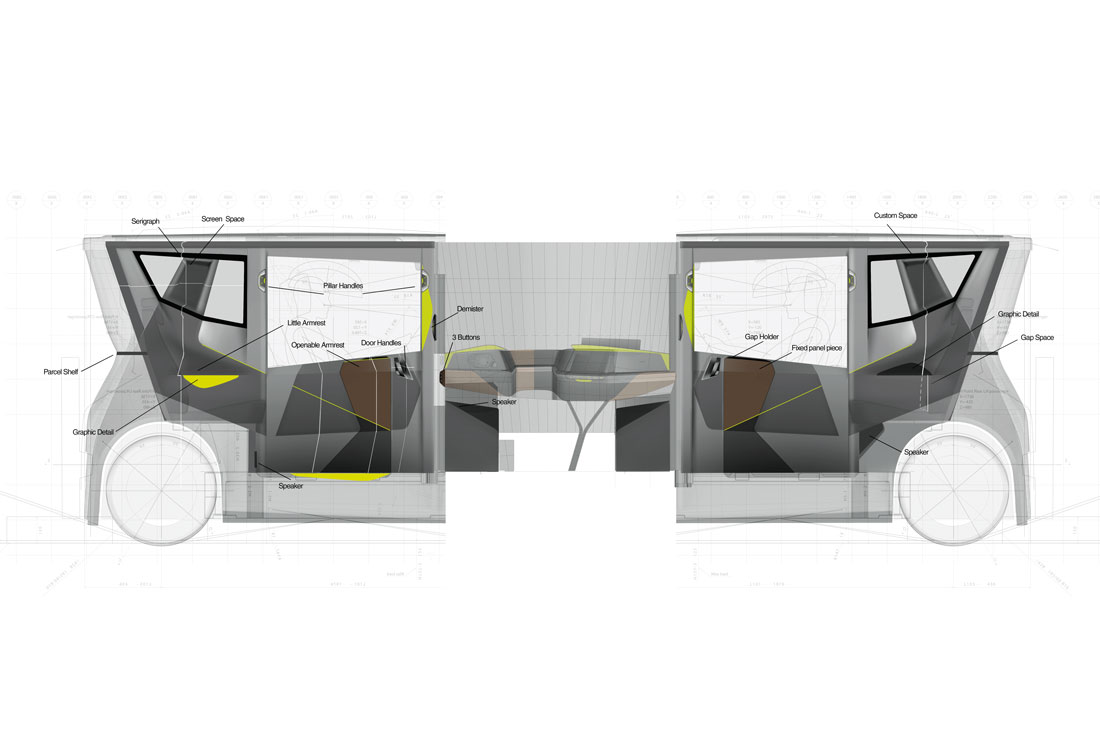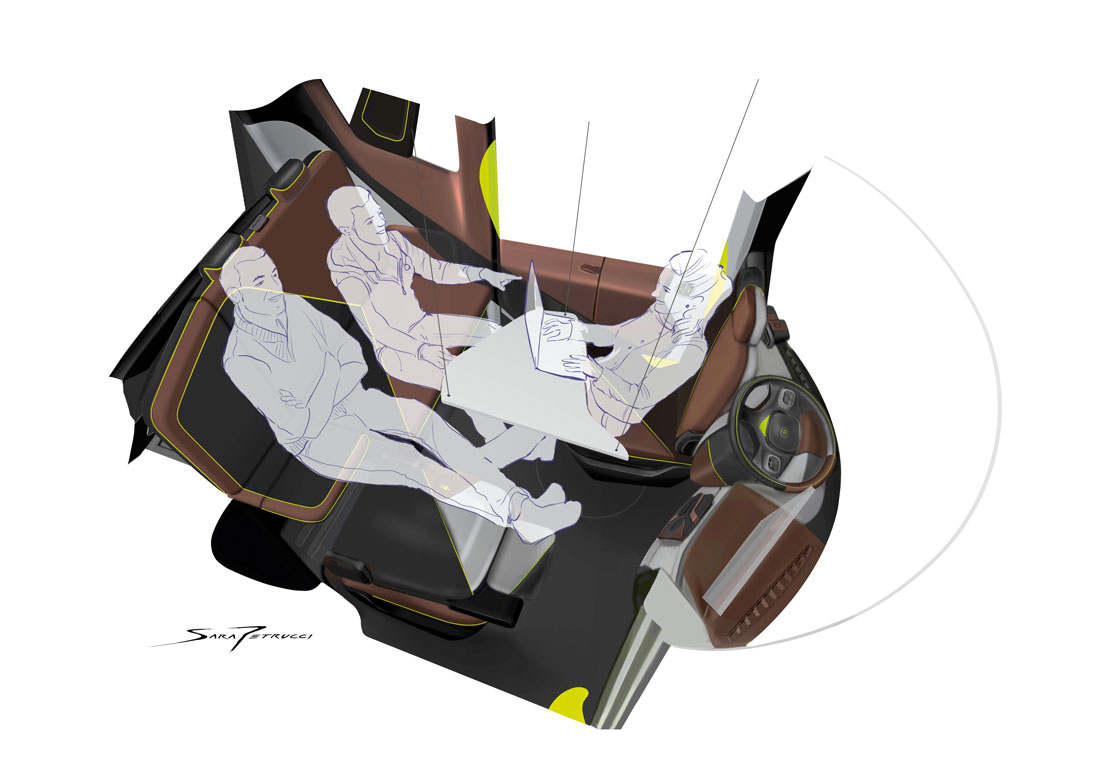“We will see a change in the world of car design when people stop thinking conventionally, associating every form with a particular category. We are still too tied to our habits, we don’t have the courage to take risks and call everything into question”. So says Chris Bangle, as always with the resolutely ironic tone that distinguishes him.
We met him in Geneva to hear his take on the cars on display and to ask him his opinion on what direction car design is heading. A question that the American designer had actually answered with Reds, the concept car presented in Los Angeles in 2017, which was shocking for its unusual (to say the least) proportions. “Reds symbolises my willingness to look to the future. Until now, the car has always been conceived as a shell, with its interior spaces slaves to the shape and proportions of the exterior. Each shell corresponds to a type, but why should a citycar meet these criteria?”
The fact that Reds cannot be associated with a category, at least among those we have known to date, is obvious. “It was a choice. We designed it this way so that everyone can read anything they like into its forms, without necessarily having to adhere to a pre-established format”. No aerodynamics, no performance, function here is summed up in the practicality and real comfort of the occupants. The negative-angle windscreen and the perfectly vertical doors allowed the interior space to be fully exploited.
“The cars on display at Geneva are mostly much more conventional,” continues Bangle, who pinpoints three macro-categories: aggressive, neutral and “sweet and silly”. Among his most interesting experiences he mentioned the architecture of the interior environment of the Nucleus, the concept of the design house Icona, a futuristic revisitation of the MPV. It is the car’s asymmetry that impresses him in this case: “Once you climb in you have a completely different perception of reality and this is positive because it pursues an unconventional concept of mobility”.
The feeling of curiosity and shock at the sight of a new object that does not tick the usual boxes usually fades as the days go by. So does it take time to appreciate a new aesthetic? “Sure. The real difficulty is to combine innovation with an aesthetic that people like”. A process of elaboration of taste that is also evident in our perception of colours: “In the 70s and 80s the future was silver. Then Apple conquered the world with white: today if you want to make a form more modern, you colour it white. Or maybe blue, like the wheels of the Porsche Mission E Cross”.
You can’t talk about the future without a mention of autonomous driving and the effects it will have on design. Bangle raises a series of questions and his reasoning by images generates new questions on the subject. “What difference would it make from a passenger’s point of view if today it is a person or a computer driving the vehicle? There is a fundamental difference: a series of continuous interactions take place among humans that are part of the journey”. And again: “Who will want to occupy the front seats? Perhaps they will be the least sought after, because they are scary. Why not try to study interiors where occupants travel sideways? At this point, we must ask ourselves, how does the passenger want to interact with the entity that is transporting him? With his voice? With a key? What difference would there be with going up in an elevator? Who of us would like to stay for hours in an elevator? We must bring the question of autonomous drive cars down to the human level, looking at it from the practical side of people and not that of cars. Because we might find that we don’t like it at all”.
Full article in Auto&Design no. 230













